Hal Ornstein, DPM, FASPS, and Gregory Stilwell, DPM, FACFAS
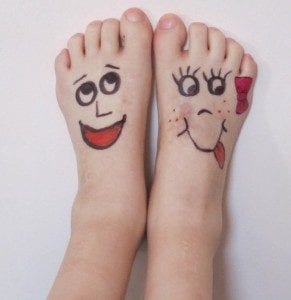
Appropriate footwear is important for people with Charcot-Marie-Tooth disease (CMT), or hereditary peripheral neuropathy, but many patients struggle to find well-fitting shoes because of their high-arched feet and hammered toes. For this reason, custom-made shoes may be necessary. Large shoe stores often have pedorthists on staff who are certified in fitting shoes for the special foot. They can cast the foot for custom-made shoes or design inserts to make ready-made shoes fit more correctly.
Because of lack of good sensory reception in the feet, CMT patients may also need to see a podiatrist for help in trimming nails or removing calluses that develop on the pads of the feet. It is important to consult a medical professional so that the patient does not injure themselves doing these procedures.
When decreased sensation is present, serious problems, such as ulcers and gangrene, can occur without pain. Infection may go unnoticed and appropriate care may be delayed until it is too late; amputation may be necessary to save the person’s life. Daily observation of the feet is necessary by those with CMT or by a trusted guardian.
Foot Structure Changes and CMT
Structural changes in the feet and ankles typically occur with CMT. As the nerves are affected by CMT, muscles become weak, and the bones those muscles control start to shift and cause bone and joint deformities. Again, if a person doesn’t have normal sensation, he or she may not feel the added pressure over boney prominences and develop a sore, an infection, or a full-fledged ulceration. A podiatric specialist can help prevent complications from CMT-caused foot and ankle deformity.
Common Foot Types Seen in CMT
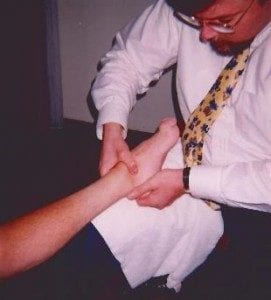
Pes cavus: The most typical type, a high-arched foot with a rigid “cave” under the instep. Calluses are common on the balls of the feet. Chronic ankle sprains and foot drop are common, as well. Hammer toes, claw toes and corns on the toes are typical. The muscles within the foot itself (intrinsic muscles) atrophy, and cause the toes to curl up. Treatment ranges from wearing insoles to surgery.
Paralytic Flatfoot: A less common foot type, which usually requires some type of fusion in the arch to stabilize the progressive breakdown.
Foot Drop: Weakness in the muscles of the front of the calf cause foot drop; those with stronger muscles in the calf are better able to lift the front of the foot up. Bracing can be effective, and rocker bottom shoes and surgery to move stronger muscles to the top of the foot are all helpful.
I have CMT, can I walk barefoot?
Be very careful walking barefoot; thoroughly inspect the toes and bottoms of your feet if you do walk barefoot, especially if you have been outside. While going barefoot, especially in sand or soft grass is a wonderful treat, it is dangerous for people with decreased “protective sensation.” If a foreign body such as a splinter punctures the skin, it can lead to an infection and cause drastic consequences if a podiatric surgeon doesn’t appropriately open the wound and extract the foreign body.
What shoes work well with CMT?
Wear shoes that allow room for your toes, yet still support your heel and arch. There should be ½ inch (a thumb’s width) between your longest toe and the end of the shoe. A rounded “toe-box” is recommended; the upper portion of the shoe should be soft and flexible. The lining should be smooth and free of ridges, wrinkles and seams.
Open toes or heels on shoes are dangerous. Wear some type of water sandal to the pool or lake that will protect your feet from injury.
Have more than one comfortable pair of shoes. Don’t wear the same shoes two days in a row, and use a “shoe tree” (available at most discount stores) in the shoe to maintain that new shoe shape.
I just got a new pair of shoes for my CMT feet. Is there a trick for breaking them in?
Break in new shoes gradually and wear them only a few hours at first to prevent blisters and sore spots. Check your feet for red areas indicating too much pressure.
Is soaking my CMT feet safe?
Be careful soaking your feet. Many foot soaks overly dry the feet; some create too much moisture between the toes. Many fine herbal foot soaks are available that can condition skin and help with aching in the feet. Be aware of too much moisture between the toes and athlete’s foot that can occur.
What can I use for dry feet?
Skin changes in the foot can be caused by CMT. Dehydration is common since those with CMT can have less natural lubrication. Fissures and cracks in the skin develop, and, often, itching can become severe. Scratching can cause breaks in the skin that may become infected. Dryness can be helped by using a good skin cream daily on every part of the foot except between the toes. For calloused or extra dry areas, use an oil like coconut, jojoba, or shea butter to moisturize the area and keep it from cracking.
CMT and Athlete’s Foot
Athlete’s Foot is a fungal infection commonly seen in people with CMT. This can affect nails as well, making them thick and painful. Many easy preventative solutions such as correct socks and OTC creams can be highly effective. However, if not treated, secondary bacterial infections that require vigorous treatment with antibiotics may develop.
Why might ulcers occur with CMT?
Ulcers can be caused by lack of blood circulating to the foot, lack of soft tissue protection, excessive callous tissue, infection, and pressure points caused by deformities. Some causes of injury and ulcers are wearing ill-fitting shoes, performing “self” surgery, applying electric heating pads or hot water bottles, and using ingrown toenail and corn remedies. If the circulatory response is adequate, most ulcers can be healed if diagnosed and treated early.
What socks are good for CMT feet?
Change your socks at least once a day and minimize cotton and nylon in them. Look instead for wicking fibers that also provide cushioning to the soles of the feet. Inspect your socks daily for stains, blood, or other drainage which would indicate an open sore that you may not realize you have because you cannot feel it.
Unless the person has Hereditary Neuropathy with liability to Pressure Palsies (HNPP), which is typically caused by a deletion of PMP22, wearing compression stockings should not be a problem. The nerves are not more sensitive to compression for most kinds of CMT.
Be aware that the tops of some socks can act as a tourniquet around your calf or ankle; if your legs swell, ask your podiatrist for a recommendation for a support hose. Always avoid wearing anything tight around your legs or ankles that may in any way reduce or cut off the blood supply to your feet.
CMT and Toenails
Keep your toenails trimmed. If you have reduced feeling, nerve problems or circulation problems, it is recommended that you coordinate with your podiatrist’s office to get a trained technician to trim your nails. This will help reduce the risk of cutting yourself, preventing a potential infection and many other problems.
Ingrown toenails press on the surrounding skin, and if a person doesn’t have adequate sensation to feel the pressure, an infection can quickly develop. To treat the problem, a podiatric surgeon will drain the infection to relieve the pressure, prescribe an antibiotic, and recommend special home care to help the infection heal. A permanent surgical procedure can be done in the office to prevent reoccurrence.
What should I do if I notice corns or calluses?
Corns and calluses are signs of excess pressure and should be evaluated and treated by your podiatric specialist.
Foot surgery and CMT
Deformities are very common in the ankles and feet of those with CMT because of progressive muscular weaknesses, causing imbalance of opposing muscle groups. Either surgical realignment or bracing with orthoses can work well. Surgery has become much more common and effective when performed by a qualified foot and ankle surgeon. From straightening toes to lowering the arch and realigning the ankle joint, new techniques have greatly improved many patients’ mobility and agility. To treat the tripping commonly experienced from a foot drop deformity, carbon fiber lightweight braces fit into most shoes and are easy to fit around the calf. Surgical transfer of muscles to help stabilize drop foot is an effective procedure. Physical therapy is commonly prescribed to help develop a Home Exercise Program and speed up healing after surgery.
CMTA Foot & Hand Care Partners
Aetrex
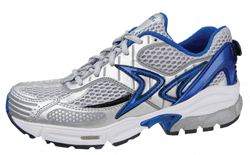 If you are willing to order shoes, consider Aetrex. Aetrex is a leader in both shoes and orthotics, and is also a partner with the CMTA. Those living with CMT know that CMT may lead to a loss of sensory functions and structural changes in the feet, which can lead to difficulties finding shoes that fit correctly. Many people cannot wear a stylish shoe with their orthotics due to a shoe that is too shallow or narrow.
Aetrex offers fashionable styles with innovative features designed to help anyone feel good on their feet and promote a healthy lifestyle. Additionally, Aetrex has several footwear styles with a velcro heel strap which allows for rear entry, making it easier to put on and take off the footwear. Learn more.
If you are willing to order shoes, consider Aetrex. Aetrex is a leader in both shoes and orthotics, and is also a partner with the CMTA. Those living with CMT know that CMT may lead to a loss of sensory functions and structural changes in the feet, which can lead to difficulties finding shoes that fit correctly. Many people cannot wear a stylish shoe with their orthotics due to a shoe that is too shallow or narrow.
Aetrex offers fashionable styles with innovative features designed to help anyone feel good on their feet and promote a healthy lifestyle. Additionally, Aetrex has several footwear styles with a velcro heel strap which allows for rear entry, making it easier to put on and take off the footwear. Learn more.
Foot Solutions
 With over 100 stores nationwide staffed with Pedorthists and Certified Fitters trained to help, Foot Solutions, a health and wellness specialty retailer focusing on properly fitting shoes, offers footwear and orthotics to properly support your feet and help relieve concerns related to CMT. CMTA members are also eligible for discounts and other services at participating franchises. Click here to learn more.
With over 100 stores nationwide staffed with Pedorthists and Certified Fitters trained to help, Foot Solutions, a health and wellness specialty retailer focusing on properly fitting shoes, offers footwear and orthotics to properly support your feet and help relieve concerns related to CMT. CMTA members are also eligible for discounts and other services at participating franchises. Click here to learn more.
CosySoles
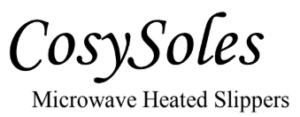 CosySoles is a Canadian family business, creating heated products for those who need them most. CMT runs in the CosySoles family and so the products are uniquely designed with this in mind. The heated products are made from a soft polar fleece and contain natural grain that retains heat, providing instant relief and increased circulation of blood flow throughout the body. CosySoles offer heated slippers, body warmers, and hand warmers- providing therapeutic warmth for the entire body. CosySoles is a proud supporter of the CMTA and offer a discount to members of the CMTA. Visit www.cosysoles.com and use code CMTA for 10% off.
CosySoles is a Canadian family business, creating heated products for those who need them most. CMT runs in the CosySoles family and so the products are uniquely designed with this in mind. The heated products are made from a soft polar fleece and contain natural grain that retains heat, providing instant relief and increased circulation of blood flow throughout the body. CosySoles offer heated slippers, body warmers, and hand warmers- providing therapeutic warmth for the entire body. CosySoles is a proud supporter of the CMTA and offer a discount to members of the CMTA. Visit www.cosysoles.com and use code CMTA for 10% off.
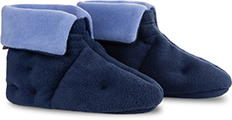 CosySoles Microwave Heated Slippers were designed for individuals with CMT. They provide a direct heat source to the foot while maintaining a flat bottom for ease of mobility. The Velcro strap allows for ease of use and provides a tighter fit around the ankle. CosySoles slippers are available in multiple sizes and colours including grey, black, blue, beige, and maroon. Shop here
CosySoles Microwave Heated Slippers were designed for individuals with CMT. They provide a direct heat source to the foot while maintaining a flat bottom for ease of mobility. The Velcro strap allows for ease of use and provides a tighter fit around the ankle. CosySoles slippers are available in multiple sizes and colours including grey, black, blue, beige, and maroon. Shop here
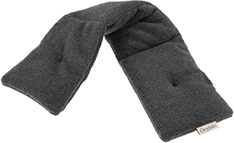 CosySoles Body Warmers are compact and versatile, allowing use for wherever the cold or pain may be. The body warmer can be used on the neck, back, knee, or stomach, providing comfort and relief when needed. Shop here
CosySoles Body Warmers are compact and versatile, allowing use for wherever the cold or pain may be. The body warmer can be used on the neck, back, knee, or stomach, providing comfort and relief when needed. Shop here
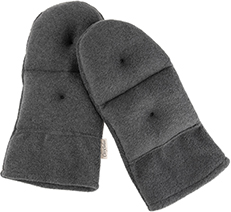 CosySoles Hand Warmers are one size fits all and allow for easy slip on and off. They provide a direct heat source to the top of the hand, aiding in circulation, swelling, and pain. Shop here
CosySoles Hand Warmers are one size fits all and allow for easy slip on and off. They provide a direct heat source to the top of the hand, aiding in circulation, swelling, and pain. Shop here





